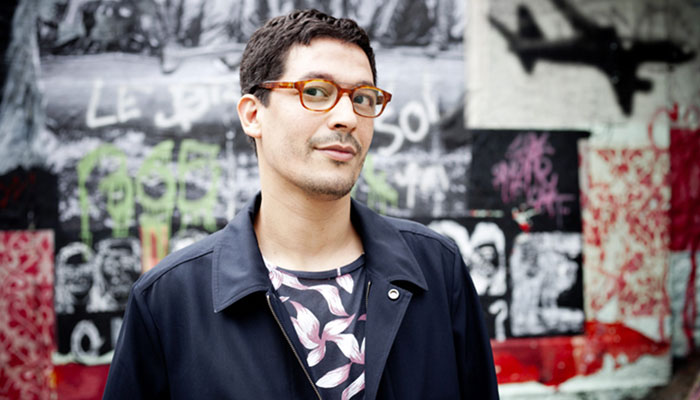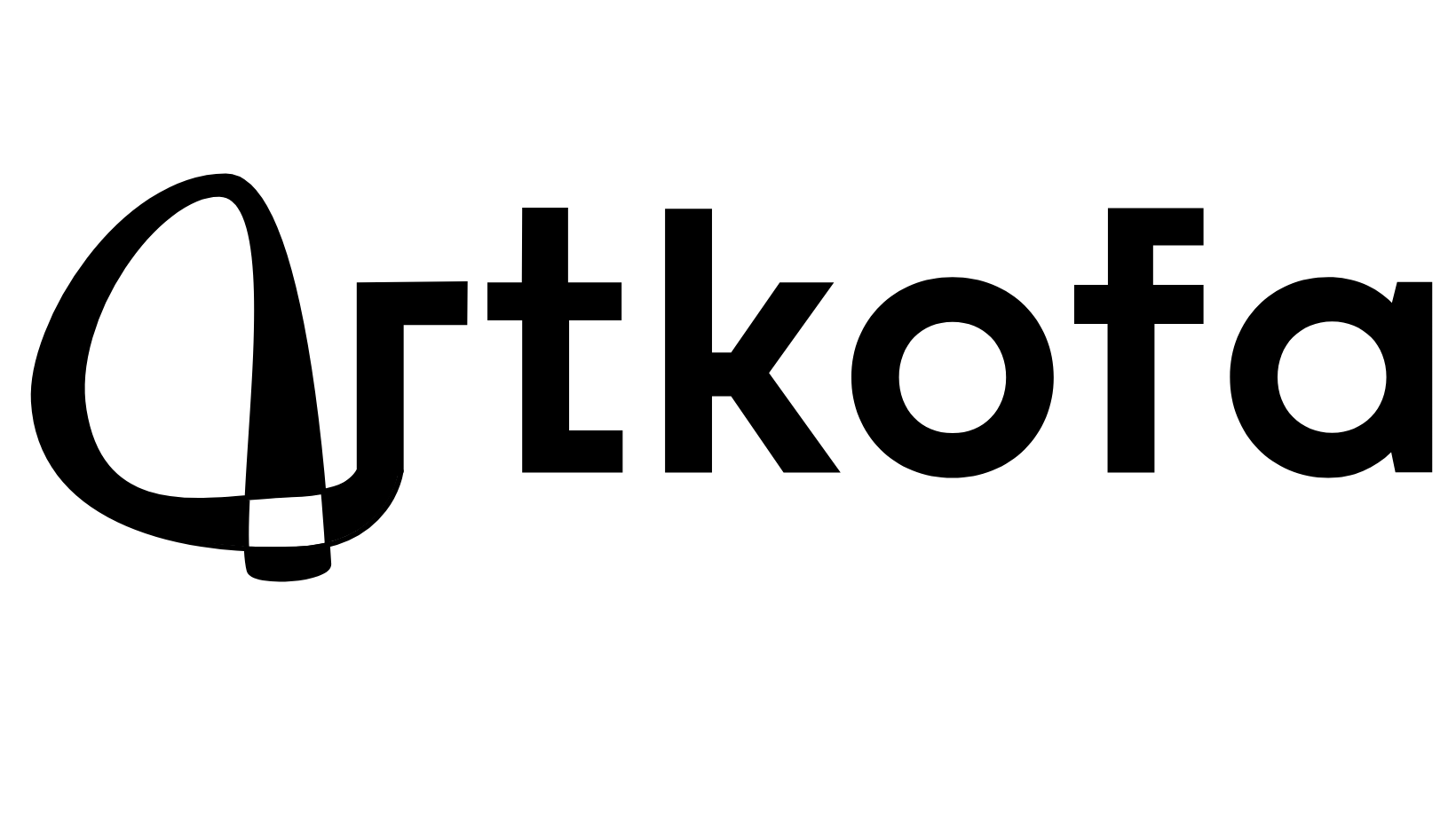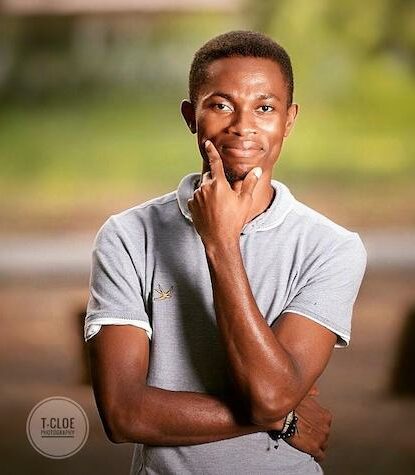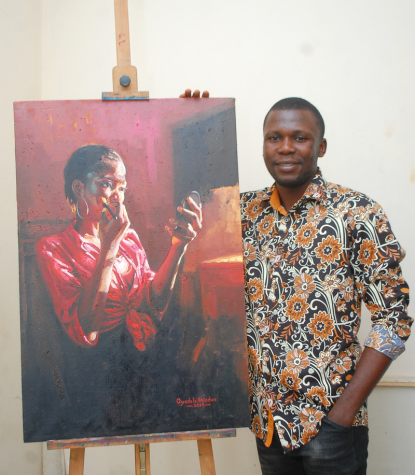No products in the cart.

Talk with: Omar Mauhoufi’s realm between past, present and future
To be in front of a work by Omar Mahfoudi is to be crossed by forces that are difficult to grasp. In a terrain of ambiguities, vibrant colours, at once warm and cold, and wet human figures, which capture you into a humid and unknown universe, are some of the marks that make the body of work of this Moroccan artist so recognisable. At the end of February, at the occasion of the finissage of his exhibition “I was dreaming of the past” at L’Atelier 21, in Casablanca, Artkofa had the opportunity to interview Mahfoudi and unveil some of the mystery that insists on hovering over his creations.
Represented since 2020 by the Afrikaris gallery in Paris, it is safe to say that Omar Mahfoudi is already part of the roster of talents that give name and impetus to the contemporary African art movement. Born and raised in Tangier, the artist also mirrors a portion of Africa most times underrepresented, but which is increasingly gaining space in the global art market. In 2017, Morocco became the most recent member of the African Union, and the next year — following the continent’s trend for founding new, modern museums to house the artistic novelties of each territory — its capital opened what is the first museum dedicated to contemporary art made in Africa in the country, the Museum of Contemporary African Art Al Maaden, known as MACAAL.
Past: childhood in Tangier and artistic-political ebullience
Coming from a country which, after serving as a creative oasis for many Europeans, is also becoming a fertile, consolidated cultural hub for its own residents and compatriots, Mahfoudi cannot help but take a critical look at the geographical and emotional landscapes that shaped his childhood. In a reflection on his personal memories, unfolding into a thought about a collective reality, the artist recalls that growing up within a “family with traditional habits, in the old part of Tangier, there was no space for creation”. It was the working materials of his father, a house painter and reformer, that aroused his curiosity for the inventive possibilities of the intentional use and mixing of forms, colours and themes.
Luckily, he always had the support of his parents to pursue the artistic vocation that was already insinuating itself in a natural way. It was around the age of 16 that Mahfoudi found himself, in fact, a self-taught artist, frequenting shared creative studios and organising his first exhibitions in alternative spaces. By this time, he was already absorbing references from various artistic sources, and the group environment of exchange and collaboration with other young artists greatly inspired him to become confident of his own work and aesthetic choices.
Looking retrospectively, Mahfoudi identifies at that early stage of his career some very different characteristics from the ones he explores in his creative process today. At that time, he tells us that his paintings were, in fact, “almost sculptural, very much tied to an investigation of the texture and relief” of the paints, brushstrokes and pigments. Very much impacted by European artistic movements — which would later be added to African and Asian influences —, he used to feel a passionate urge to create something provocative and expressive of the inner revolt of a young adult who, as he tells us, was engaged in the Arab Spring protests in 2010.
Present: artistic maturation and the takeover of fiction
From the rawness of the brush to the flatness of drawing, from portraits to nature, from conflict to the placidity of a lake, whoever comes across a piece by Mahfoudi today will certainly perceive themselves to be in the presence of a context that is more magical than strictly activist, “more existentialist than political”, he says — although the write of this article does not believe that both perspectives are mutually exclusive. At a certain point in his creative and personal maturation, which the artist also associates with the birth of his daughter, he began to feel that it was necessary to make more room for the autonomy of the work itself, which begins to more comfortably inhabit the undisclosed and the secret. “It is necessary to give more freedom to fiction,” says Mahfoudi, “to offer the conditions for something to appear unexpectedly, without us actively seeking it, with less involvement and a little more distance.”
This is also the role played by water, a recurring element in his creations, both as a method — while painting, the artist uses a spray bottle to splash the water onto the canvas, causing the outlines of a certain figuration to drip and dilute — and as a theme and figure. It is from and through water that his ghostly characters are born — and, here, Mahfoudi also recognises a possible connection to his childhood memories, populated by the sea. A sea that, “from a space of encounter and fun, very quickly becomes a cemetery, a space of loss and mourning of those clandestine men who risk their luck to reach the other side by water”. Perhaps it is their souls that the Moroccan artist paints, spirits that are still navigating the borders, trying to cross worlds. Perhaps, then, Mahfoudi’s indefinable universes are the afterlife itself, a representation of paradise, forbidden in the Muslim religion, that finds materialisation through art.
Therefore, it is a question of emphasising the depth of these themes which, although motivated by very particular and intimate circumstances, carry an undeniable universal character. After all, if the artist gives life to a kind of non-place, he also gives lines and traces to an immemorial time, located neither in a past nor in a future, but still soaked in nostalgia. Nostalgia for something that was lost (humanity, maybe?, or nature?, dignity?, faith?, beauty?, the idea of utopia?) or for something that never even existed. No wonder the title of his last two exhibitions refers to the unstable and fluid ground of memory: the already mentioned “I was dreaming of the past” and, also, “The Forgotten Branches”, at Afikaris Gallery. A great admirer of Tarkovsky’s images — and a great connoisseur and curious of the seventh art in general —, Mahfoudi inverts the logic of the film that intends to be a painting and seeks to make his paintings like a film, capable of containing, in one frame, all the immensity and poetics of a story.
Future: the perfect conflict and the art of questioning
But poetry is not just harmony. “Paradise can be boring,” he confesses. It seems to me no mistake to say that the potency of any creative act lies precisely in its capacity to balance chaos and order — art thirsts for risk. That is why Mahfoudi does not completely eliminate the conflict that was there at the beginning of his career. In the calmness of a lake, there is also a tension that prepares itself for something that may disturb its waters. Our own expectant gaze searches for this surprise factor, as if something that is missing were just hiding, in a game between absence and presence in which we are obliged to participate, without knowing the rules. We look with the certainty that we, too, are being seen, knowing that the picture is never offering itself in its totality; we pose the questions, knowing that the answer may never come.
When Artkofa asks Mahfoudi about the next directions in which he is taking his creations, the artist shows us some of his paintings in-progress — although, for him, all of his pieces remain “somewhat unfinished” —, that mark a kind of transition, a plunge into this suspended instant of unease. Working on a new series for a possible solo show next year, Mahfoudi walks away from water towards fire, from liquid to air, from blue and green to orange and gold, thus revealing that there are still many unresolved questionings to be brought up — and, in the art of elaborating increasingly sensitive, precise and complex questions, the perfect interrogation will be the one that already dispenses any answer.
Discover our outstanding artists :




